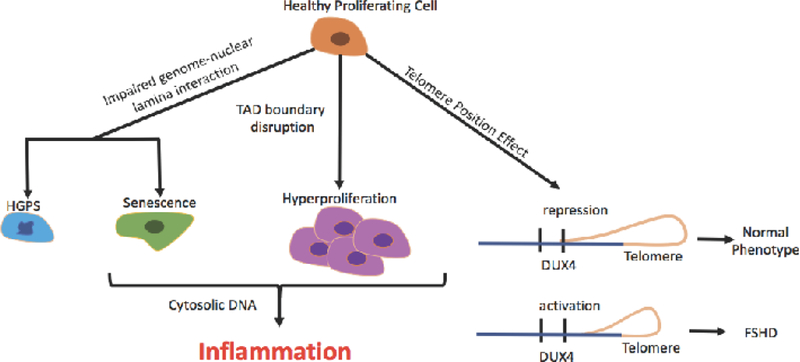Figure 2.
Schematic of some of the known 3D perturbations which can elicit different disease states. Impaired genome nuclear lamina interaction is associated with cellular senescence as well as causal to laminopathies such as Hutchinson-Gilford progeria syndrome (left). TAD disruption can lead to aberrant gene expression, contributing to hyperproliferation and cancer (center). Progressive telomere shortening can regulate gene expression over long distances, a process called Telomere position effect (TPE), and can lead to pathologies such as Facioscapulohumeral muscular dystrophy (FSHD) through the activation of the DUX4 locus.

